Part Analysis
| General Data | |
| Manufacturer (OEM) | CWT |
| Platform | GPX |
| PCB Type | Double-Sided |
| Primary Side | |
| Transient Filter | 2x Y caps,2x X caps, 2x CM chokes, 1x MOV,1x Power Integrations CAP200DG (discharge IC) |
| Inrush Protection | NTC Thermistor SCK-056 5Ohm & Relay |
| Bridge Rectifier(s) |
1x Diodes GBU1506 (800V, 15A @ 125°C)
|
| APFC MOSFETs |
2x Great Power GP28S50 (500 V, 28 A @ 150 °C, Rds (on): 0.125 ohm) & |
| APFC Boost Diode |
1x CRMICRO CRXI06D065G2 (600V, 6A @ 167°C)
|
| Bulk Cap(s) |
1x CapXon (420V, 560uF, 2000h @ 105°C, HP)
|
| Main Switchers |
4x Silan Microelectronics SVF20N50F (500 V, 12.6 A @ 100 °C, Rds (on): 0.27 ohm)
|
|
MCU |
1x Texas Instruments LM393 |
| APFC Controller |
Champion CM6500UNX
|
| Resonant Controller | Champion CM6901X |
| Topology |
Primary side: APFC, Full-Bridge & LLC converter
Secondary side: Synchronous Rectification & DC-DC converters |
| Secondary Side | |
| +12V MOSFETs | 6x Infineon BSC014N04LS (40V, 107A @ 100°C, Rds(on): 1.4mOhm) |
| 5V & 3.3V | DC-DC Converters: 4x UBIQ QM3054M6 (30V, 61A @ 100°C, Rds(on): 4.8mOhm)
PWM Controller: ANPEC APW7159C |
| Filtering Capacitors | Electrolytic: 10x Elite (2,000h @ 105°C, PF), 5x CapXon (2-5,000 @ 105°C, KF), Polymer: 27x CapXon |
| Supervisor IC | IN1S429I – DCG |
| Fan Model | Martech DF1202512FDHN (120mm, 12V, 0.42A, Fluid Dynamic Bearing Fan) |
| Standby PWM Controller | Power Integrations TNY287PG |
These CWT’s GPX platform upgraded to the ATX v3.0 and PCIe 5.0 transient response requirements. On the primary side, a full-bridge topology is used instead of a half-bridge one. Since full-bridge is more expensive, CWT used four affordable main switching FETs. This way, the total cost of these four FETs is lower than that of two higher-quality ones. On the secondary side, all FETs are of high quality since there is no room for downgrades there.
The PCB is small, but there is still plenty of space between parts for efficient cooling. Unlike other CWT platforms, this one has heatsinks on the secondary side. These two heatsinks cool down the FETs generating the +12V rail, which are installed on the PCB’s solder side. Speaking of the solder side, soldering quality is generally good. The build quality is decent. MSI didn’t use top-notch parts, on the primary side and part of the secondary side, to keep the cost down. However, the Elite caps on the secondary side won’t have a problem outliving the product’s warranty under normal operating conditions. When there is no budget for Japanese caps, Elite and Teapo caps are the best alternatives.
I would prefer if MSI used a better fan. Yes, it has a fluid dynamic bearing, according to its manufacturer, but a Hong Hua fan would be way better.

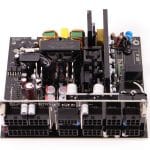
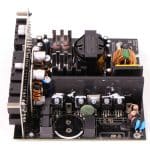
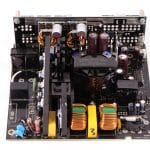
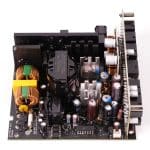

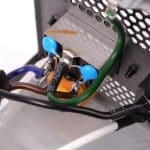
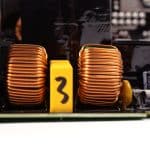
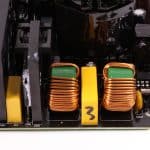
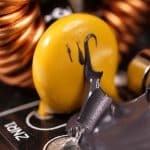
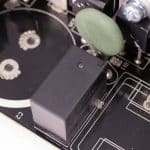
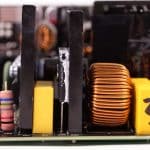
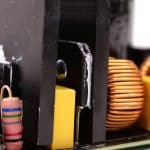

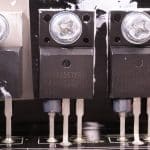
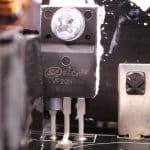
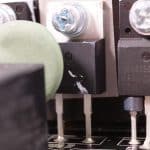
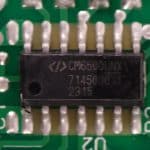

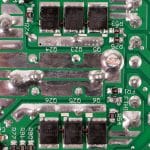
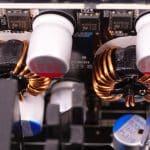
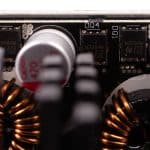
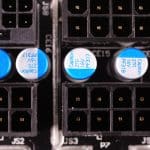
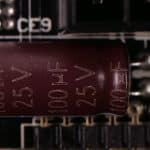
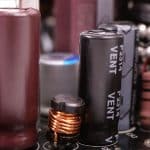
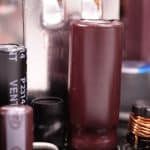
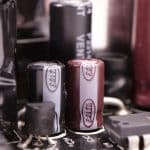
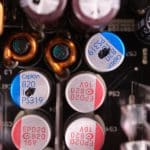
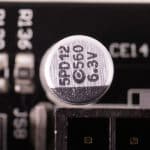

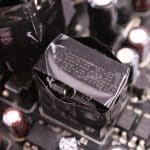
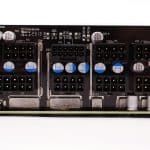
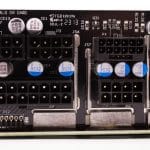
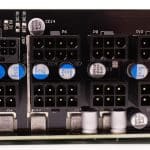
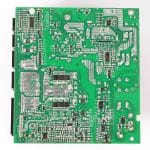
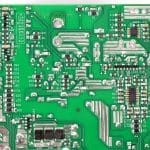
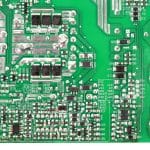
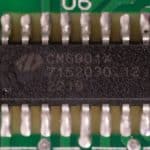
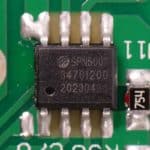
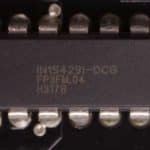
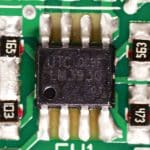
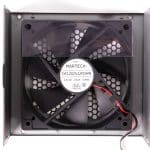
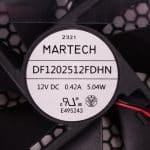
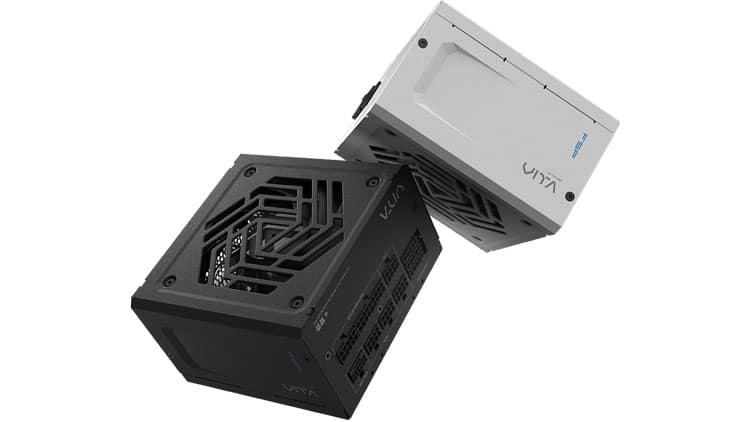
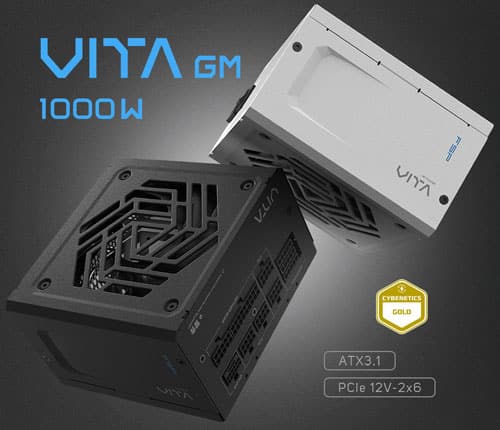
Is there explanation and images for Fan Noise for 230V, like the explanation and images for 115V?
I am seeing only the overal table comparison (between different PSUs) for Average Fan Noisee for 230V AC Input.
Sorry, I only provide the fan noise map for 115V because, typically, it is the worst-case scenario. Noise at 230V is lower in most PSUs.
Thank you for your response.
If you can publish the charts and explanation for the results for the 230V, that will be very helpful for me.
I use 230V AC Input, and i use this PSU.
At the begining was everithing OK, but after three monhts my PC produce much more noise.
And this noise is produced during the PC start and continue in light CPU Usage (CPU Usage < 20% and CPU Temperature < 40 grad Celsius)
I can monitor the CPU FANS RPMs, but I am not able to monitor the RPMs for the PSU FAN.
Is somehow possible that the PSU Fans have maximum RPMs during PC start and in light CPU Usage? (Without any reason).
Thank you in advance for your your response.
Could you have a problem with the MAG A850GL? Is it possible that you have technical failures? Or is it of good quality? Would it work for me with an RTX4070? … sorry for so many questions and again thank you very much for your help
It will work fine. Why fail 🙂 It is a good PSU, no worries.
Podría tener algún problema con la MAG A850GL? Es posible que tenga fallas técnicas? O es de buena calidad? Me serviría con una RTX4070?… perdon por tantas preguntas y nuevamente muchas gracias por tu ayuda
My hardware is: b450 aorus elite v2, ryzen5 5600x , rtx 3060ti. and I’m considering the msi Mag A850GL at 89USD, but I’m not sure if it’s a good option, or if it’s better to buy another one. Could you help me with your advice? thank you very much
For your system it is a good option.
Could i have a problem with the MAG A850GL? Is it possible that you have technical failures? Or is it of good quality? Would it work for me with an RTX4070? … sorry for so many questions and again thank you very much for your help
This is the footnote in particular from Cultists power supply tier list
[2] High wattage (=>750W) CWT GPX based units have problems with failing burn-in test under sub 100VAC input, don’t use in countries with sub 115VAC mains (JonnyGURU).
https://cultists.network/140/psu-tier-list/
This is with a 90V input at full load and high temperatures >40C. The PSU’s power spec table says 100-240V. It doesn’t say 90V, so you operate the PSU out of spec if you do that. I don’t agree with 90V testing, and this is why I restrict it to 100V.
MANY PSUs fail under the same scenario, not only the GPX platform.
Thank you for your response
Since 120v is within spec, It would be okay to use the A850GL and any CWT GPX based power supply in north america and 120v-based Regions, Right? it wouldn’t face any issues – just to confirm
I appreciate your input, thanks again for all the effort.
you won’t have any issues.
I know I am saying this for the fourth time – But thanks again.
Your reviews have been a huge ton of help for many people, Its really great to have someone as proffesional to review, help and interact with others like this.
And sorry for the slightly late response.
thank you!!
Hi, Thank you so much for your reviews – I appreicate the effort.
I’ve wanted to ask about something regarding CWT GPX based PSU’s in 120v Regions, According to Cultists PSU tier list, =>750W CWT GPX based units apparently have issues in 120v regions and whatnot?.
Regardless, Cultists’s list has not been updated in a while, And they do not have the A-GL in the tier listing, So i’d like you to ask you about it, Is theres any problems with CWT GPX based units in 120v regions and did you face any issues with the A850GL on the 120v rail in general?. Thanks.
Hi there, i have a question i know the anwser but i want to ask you, the A850 is very cheap now like under 100 Euros, and the SuperFlower 1000w XP is 180e. The construction, quality is very different? Should i go for the Super, or the A850 is enough? i have a system of 550W, and i will buy a new gpu from the 5000 series. Thank you!
The A850 if it covers your needs and you don’t need much Wattage. Now if you go for the 5080 or 5090, definitely the 1000W SF unit.
I would probably go for the GF A3 unit.
Thank you for the reply!
Well, I know this is problably the type of questions you really don’t like to answer, but I’ll be most probably changing 6750 XT to 7700 XT in the shopping list, hence budget for the PSU gets lower… What would be the cheapest 700W+ PSUs I could get and would still be decent? I would prefer semi-modular or modular.
Hi, glad to find review of this one, thanks! If you were to choose between:
a/ Thermaltake GF A3 850W for 115 EUR
b/ MSI MAG A750GL PCIE5 for 98 EUR
which one would you choose? The PC is i7-11700 + RX 6750 XT.